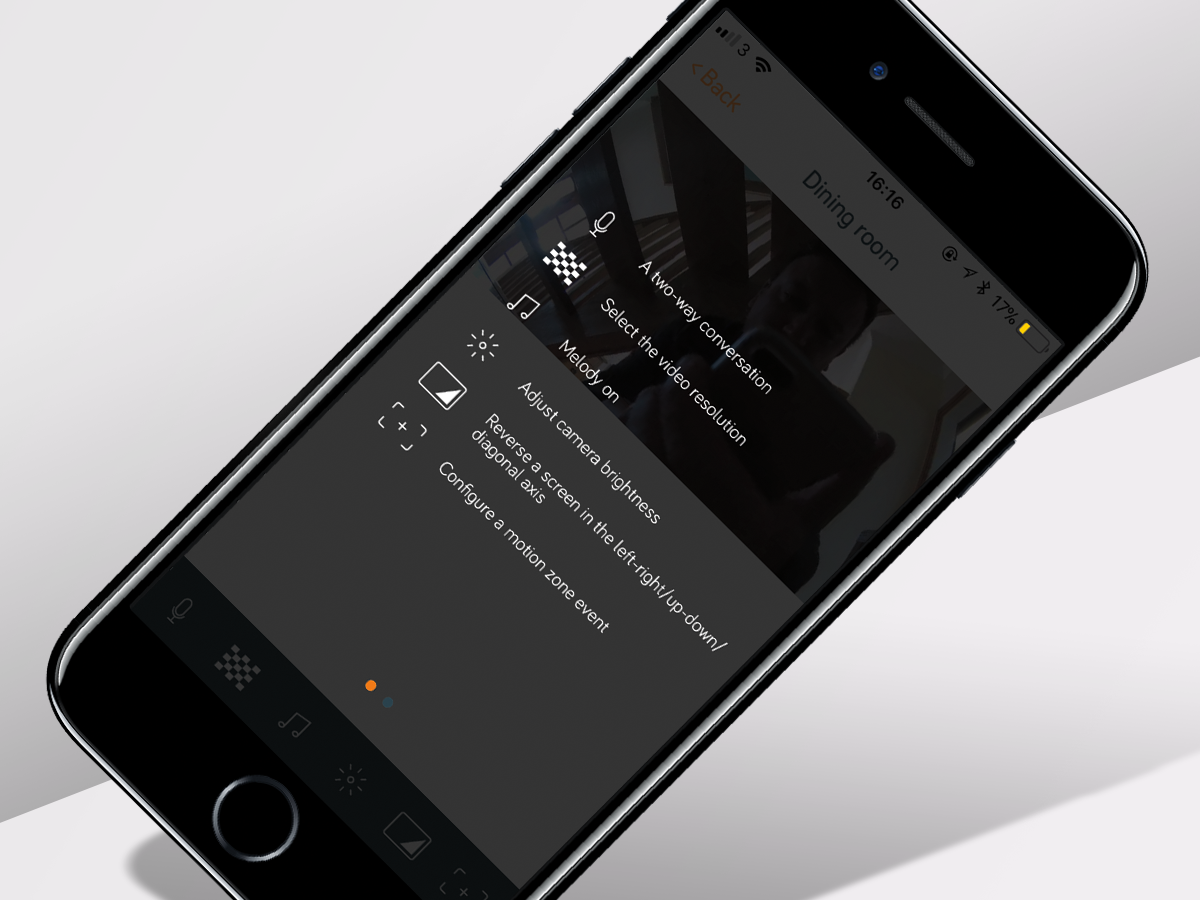Hive Camera review
A smart security cam which gets lots right without ever standing out

Smart security cameras are brilliant, giving you peace of mind when out, letting you snoop on family members and making it possible to watch live from another country as someone burgles your home.
There are loads of them available, with every major smart home player including one or two in its line-up. Hive is the latest to join the list, adding the Hive Camera to an arsenal of smart home products which already includes smart lighting, a thermostat, motion detectors and smart sockets working together to create a complete smart home system.
However it is undoubtedly late to the party, and many people will already own a Nest, Netatmo, Withings or Canary. So does the Hive Camera offer enough reasons to change?
Hive Camera design – compact yet stylish

The Hive Camera is a compact security cam, and I was suitably impressed by its build quality too. It’s very much like the Nest Cam, in fact, only white rather than black. Oh, and it’s plastic rather than metal, so it feels a little less premium than Nest’s offering.
Still, it does cost £30 less and it’s not like you’re going to be handling it very often. Ultimately, it looks like a security camera should do: unassuming – so it’ll blend into white walls nicely.
On the side is a microSD card slot, and on the back the Wi-Fi setup button. A status light on the front sits below the lens. One thing about the stand – it can either be a tabletop stand, or, by removing the rubber, you can screw it to your wall (the screws and rawl plugs are included). So if you want your camera higher and out of the reach of children, you can have that. But bear in mind the supplied microUSB cable is only two metres long, so you’ll either need a socket nearby or you’ll have to invest in a longer cable.
Hive Camera Setup – easy as 1,2,3

As with all Hive devices, the setup begins with an app. And it’s here that the Hive Camera’s first drawback becomes apparent: rather than use the standard Hive app, the Camera has its own dedicated Hive Camera one for both setup and viewing footage; as you’d expect it’s available for both iOS and Android.
As well as giving you yet another app to find space for on your homescreen, this means anyone who’s bought heavily into the Hive ecosystem won’t be able to control their entire smart home from the one place, which is a bit silly really. It also means you can’t use the online dashboard at hivehome.com to view and manage the camera.
On the other hand, there is one big benefit to the camera being a standalone device, and that’s the fact that you don’t have to have the £80 Hive Hub to use it, unlike every other Hive device.
Setting up the Hive Camera is a piece of cake, and I was up and running within a few minutes of starting. Bear in mind, though, that you do have to register a Hive account; I already had one, but if you don’t you’ll need to factor in another five minutes for that.
The process is fairly typical and very simple: plug it in, hit the Wi-Fi connect button on the back, temporarily connect to it using your phone’s Wi-Fi settings, then hook it in to your network. Once your camera’s light has turned from blue to green, you’re good to go. A few more steps in the app enable you to name your camera (handy if you’ve got multiple cams around your home), create a password, and set up motion and sound alerts on your device.
Hive Camera features – zoom, record and more

The Hive Camera is pretty well served when it comes to features, without having any that you won’t find elsewhere.
As with the Nest Cam, you can use it to communicate with an intruder, pet or family member using the built-in microphone. Just tap on the microphone button on the app and either yell something like "Get the hell out of my house!" or say something like "Hello Poochie, Daddy misses you". Don’t get these the wrong way round.
Speaking of audio, you can also play some rather silly alerts – a police siren, dog barking or alarm. However, the fact that the speaker on the Hive Camera isn’t that loud doesn’t exactly make it a strong deterrent. Yes, you can tweak the volume in the app, but it never reaches bone-shaking levels.
Other app options enable you to boost the brightness of the picture and change the orientation of the video, depending on how you’ve mounted the camera. In full-screen mode you’re offered a few more options – including the ability to zoom in on specific areas (up to 4x).
You can also set up motion-detection zones by drawing an orange box over the area you want to monitor. This is handy if you only want to detect motion at the back door, for instance. You first have to enable the Motion Detection feature in the ‘Event’ settings. Here you can up the sensitivity on both motion and sound detection – so for the latter, when the slider is at its lowest, you will only be notified if there’s a loud noise.
There are a few other nice features, such as Night Vision mode, which works well and is great for monitoring the home when you’re on holiday in another time zone, say. And then there’s the fact you can use an SD card to record any motion automatically – and then play the clips back using a calendar interface. But, you can’t record to the cloud, meaning that if a nasty intruder sort spots the camera and pinches it, you won’t have a backup. Personally, I’d be happy to pay a little more for cloud storage, as you can do with Nest Cam and Ring Video Doorbell, for example.
Nest Cam vs Hive Camera
There are a number of similar security cameras on the market, with Nest’s offering in particular sharing much of its DNA with the Hive Cam.
Having used both extensively I’d say that the Nest Cam feels a little more premium in its build quality, although lacks the ability to wall mount without a third-party adaptor.
Both are powered by microUSB and both record 1080p video. Where the Nest Cam tops the Hive Camera is in a) its ability to record to the cloud – handy for gathering evidence; and b) the fact that it integrates with other Nest and third-party devices, meaning you can set it to trigger lights and so on when any motion is detected.
We’d like to see Hive update its camera to work in a similar way – or at least bring IFTTT integration to the table.
Hive Camera performance – 1080-yippee

The Hive Camera’s performance is, thankfully, very reliable. Obviously you’re going to get a better picture with a strong Wi-Fi connection both ends, but even with relatively low upload speeds and 3G data I was able to view high-resolution output without any glitches.
There are three resolution options – low, medium and high, and you can switch between them at will, as well as setting a default. The best idea is to do a test with your connection(s) and see what works best for you.
I was impressed with the 1080p output and recording – everything was sharp and I was able to monitor my dining room in pretty much perfect clarity. Of course, you can have multiple cameras – which you can manage through the app. But you can’t view multiple cameras at once, something I’d very much like to see.
There’s a load of potential for multiple Hive Cameras to communicate with multiple motion sensors for a truly smart security system. However, as it stands you have to manually flick between cameras if you want to monitor different rooms. And there’s no smart home integration, for instance switching on Hive lights when motion is detected.
Hive Camera verdict

The Hive Camera is best described as ‘fine’.
It’s unassuming, records sharp video and has a plethora of options for viewing and getting notifications via the app. Taken as a standalone cam it’s up there near the top of the second tier – below the Nest Cam and Netatmo Welcome, but still pretty good.
But really this still feels like a massive missed opportunity. The lack of any kind of cloud recording is one of the major turn-offs here, but an even stranger omission is the inability of the Hive Camera to link with other Hive gear, let alone third-party products.
For instance, I’d have liked to have seen it at least able to plug in to the main Hive app and interact with other Hive devices – being able to use a ‘recipe’ to turn the camera on when a motion detector or window sensor is triggered, say. And if you’ve already bought into the Hive ecosystem, having to use an additional app is a bit of a pain.
Hive has a massive user base due to its origins in British Gas, and already has the other trappings of a smart home. Why it can’t work with them, or at least use the same app, is simply mystifying.
So while there’s nothing much wrong with it in its own right, there’s also little reason to buy it over any of the many, many other options out there. Shame.
Where to buy
Buy the Hive Camera here from Amazon (UK) | Hive (USA)
Stuff Says…
A decent home security camera with plenty of features, but lack of cloud recording and smart home integration hold it back
Good Stuff
Compact, sleek design
Plenty of control options
Sharp video recording
Bad Stuff
No cloud recording
No smart home integration
